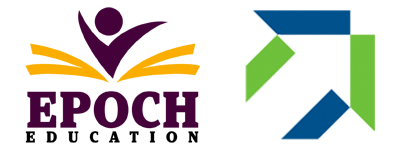
In response to the ways COVID-19 highlighted inequities in their schools, a small team of district leaders at Austin Independent School District embarked on a process to redesign elements of their teaching and learning to make school work better for more kids as part of the Always Ready for Learning Strategy Lab. Despite the daily challenges and competing priorities of the pandemic — including a historic cold snap that shuttered schools for a week and left many in their community without electricity, food, or water — these efforts at Austin ISD have marshalled on.
The desire to make teaching and learning more equitable is not unique; however, Austin’s persistence in the face of continual disruption provides important lessons for others embarking on equity work amidst distractions, competing priorities, and urgent needs. So how are they doing it?
The Learning Accelerator teamed up with Epoch Education Partners to support Strategy Lab districts in their quest to make equity work stick. Here are four lessons we learned to help leaders like yourself live up to your ambitious desires for using an inclusive, equitable process to redesign your schools to be more equitable and resilient.
Fortify Team Resilience Through Common Language and Purpose
Understanding why your team has come together will help provide a guiding vision and will serve as a focusing anchor for your equity work. From this foundation, you can establish a common understanding of equity, and collaboratively develop new language or activate existing language. This will help you identify areas of focus for design work and lead to more effective communication across your team.
At the beginning of the design process, Austin’s design team reflected on its purpose. The team was clear on its desire to explore standards-based grading, but team members’ alignment on the “why” behind that shift — for more equitable instructional practices — was critical to their success; one team member wrote, “we knew this was a group grounded in design thinking and wanted to create space for innovative, thoughtful reflection when we knew we would be pressed to create it. We want to challenge ourselves to put equitable practices in action.”
Thoughtfully Identify, Collect, and Mobilize Stakeholder Voices
Collecting enough data from the right people is essential for understanding stakeholder needs. When the sample size is too small, you run the risk of assuming that the experiences of a few represent the needs of the larger collective; enough data are needed to identify common patterns and to see how a population may diverge in their needs. Conversely, a large quantitative data set is helpful, but will need to be thematically organized and cross referenced with qualitative data in order to most effectively inform action steps and solutions; humanizing the quantitative data will deepen understanding and investment. Aside from population size, you will want to focus on the stakeholders that are most impacted by the equity issues you are addressing. This process may mean stretching out of established comfort zones to connect with historically marginalized groups in your community.
Early on, the Austin design team conducted empathy interviews to better understand the problems they wanted to address from the perspective of the students who were experiencing them. As the team moved towards piloting solutions, they sought to include more voices — particularly of teachers and principals who would ultimately champion the work. Including a variety of stakeholders at critical junctions not only ensured a more inclusive process but also greatly improved their understanding of the problem and potential solutions.
Create Processes for Ongoing Relationships with Stakeholders
Engaging stakeholders and prioritizing their perspectives creates an opportunity to build trust and develop relationships beyond initial empathy interviews, surveys, or community forums. When you stop there, an opportunity is missed to nurture budding relationships and deepen existing connections. An ongoing relational process looks like:
- sharing your findings with stakeholders,
- collaborating with stakeholders on potential solutions and implementation strategies based on the findings, and
- creating a mechanism for stakeholders to evaluate the effectiveness of the solutions and their implementation.
Austin’s design team strategically solicited input throughout the design process, especially from students with the greatest opportunity to benefit from change and educators implementing solutions. The team also scheduled recurring touch points to further deepen their relationships with stakeholders and hold themselves accountable, including biweekly meetings with teachers and pre- and post-surveys of teachers and students engaged in the pilot.
Connect Design to Existing Priorities and Initiatives
Assessing your environment for existing equity leaders, equity-centered programs and practices, and systemic equity initiatives will help you avoid recreating the wheel. Synergizing and chronicling your equity efforts can help you mitigate burnout, maximize resources, and avoid program duplication.
Like many districts, Austin ISD’s past includes a litany of initiatives seeking to improve their schools. The design team sought to ensure not only that their work was built upon prior efforts, but also that it would be transparently accessible for future designers. To start with, they reflected on past initiatives and identified connection points. The team also used Austin’s “district scorecard” to connect their work to broader district initiatives, focusing their actions and optimizing the potential for stakeholder buy-in. Throughout the process, the team methodically documented the work in a centralized, shareable document.
Striving for equity is an ongoing process and an evolving practice. Austin ISD’s implementation of these safeguards kept their team on track, connected them to stakeholders, and built capacity through sustainable and replicable processes. Having witnessed a snapshot of their journey, how will you use these safeguards to design your processes and systems for equity and resilience? Check out the Real-Time Redesign toolkit for more information on how to get started with an inclusive, rapid, and practical process for making meaningful change in your schools.

